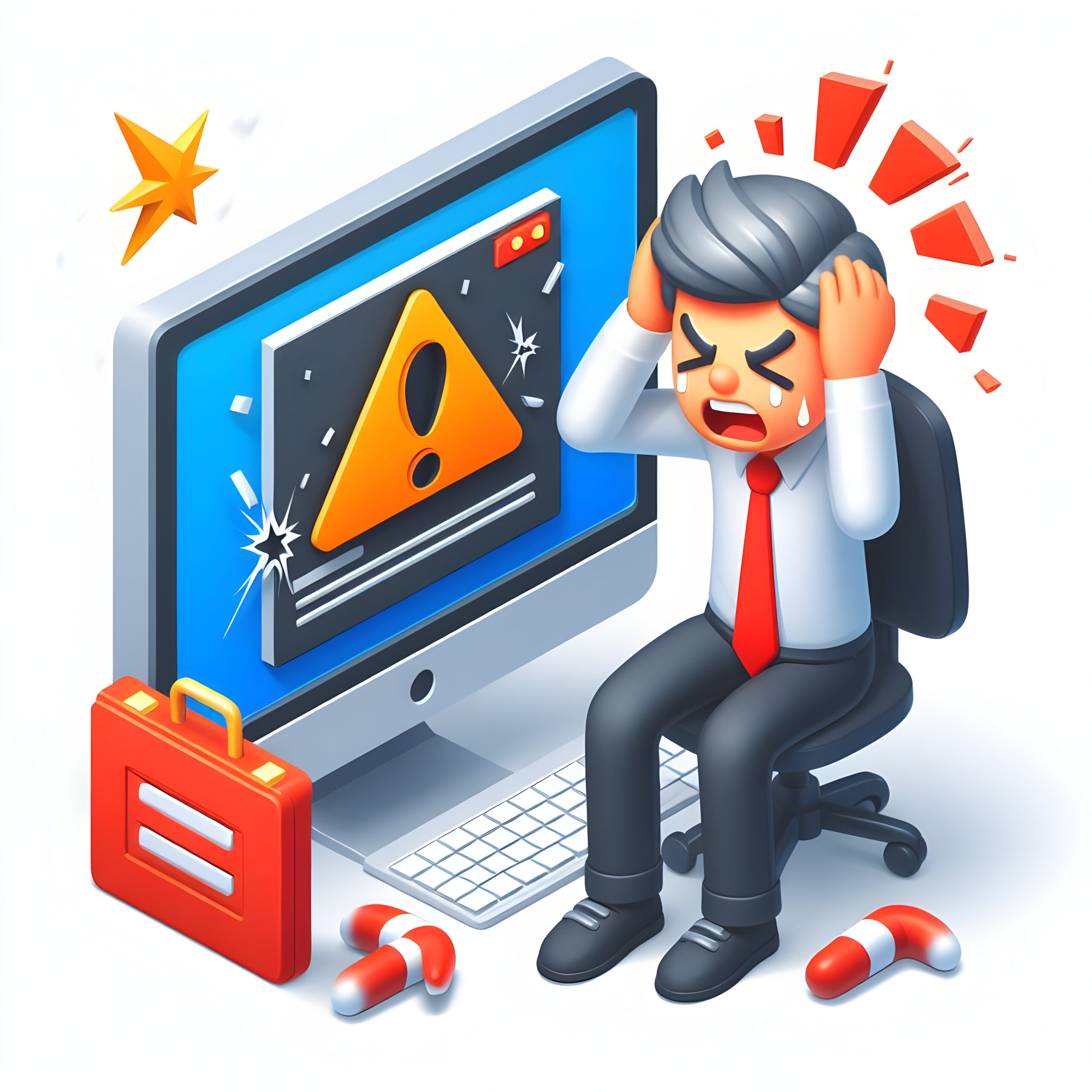Avoid Spam Triggers in Your Emails: Keep Your Brand Safe
A smart person makes a mistake, learns from it, and never makes that same mistake again, but a smarter person learns from others and never makes their mistakes in the first place.
In this article, we’ll discuss three email marketing mistakes avoided by e-commerce brands, as making those mistakes would have cost them billions of dollars.
So, let’s dive in.
We strongly recommend that you check out our guide on how to take advantage of AI in today’s passive income economy.
Table of Contents
Mistake Number One: Not Experimenting with Your Campaigns
Every best practice we see today started as an experiment.
Back in 2013, Dell was tinkering with a new computer: a convertible laptop tablet called the Dell XPS 2 Convertible Ultrabook.
It was a big deal, but since it was a new product, there were no best practices on how to market it.
No one knew what a convertible laptop was back then, so their team was naturally struggling to come up with ideas to promote it.
Then came David Sır, who proposed a marketing experiment.
He suggested using a GIF to showcase their new product in emails.
GIFs and marketing are popular now, but back in 2013, no one was using them.
Using GIFs to showcase a new product was risky, as it could potentially trigger spam filters and land the emails in the dreaded spam folder.
However, David persisted through all the politics and persuasion so that the customer, who is only going to look at the email for a couple of seconds, could see the full convertible and be tantalized to click.
The result? The experiment was successful.
This email produced a 109% increase in revenue. That’s right, 109%!
Their story tells us that we should go out of our way to provide an experience for our customers that is engaging and that they want to click on.
Experimenting with other formats is not only fun but necessary, as long as we carefully consider potential spam triggers and avoid them.
Mistake Number Two: Treating All Your Users Equally
I bet you know the TV series The Walking Dead.
This popular dark and dystopian franchise started off as a comic series by Skybound Entertainment.
After the success of their comic book across the globe, Skybound Entertainment went all-in on expanding the e-commerce side of their business, and email marketing soon found its way to center stage.
As they grew in popularity, they collected over 2 million emails, but even with an email list of more people than the population of Iceland, email marketing was just not working for them.
They were struggling to meet even the average industry email open rate of 20%.
As Eric Damon, Creative Director at Skybound, studied their previous email campaigns, he noticed that a single email copy was created and blasted to all 2 million contacts.
There was no segmentation whatsoever.
As you may imagine, this is a big concern.
Statistically, marketers who segment their campaigns increase revenue by as much as 760%.
Sending emails without proper segmentation is just not smart.
It’s like sending a “good morning” text to everyone around the world just because the watch strikes 10:00 a.m. in your time zone.
Yeah, that would be a bit creepy, but more importantly, it’s not applicable to everyone.
He also noticed that their campaigns had no personalization of any kind, not even first name personalization.
So, they aggressively doubled down on fixing those issues.
The result? They started with a simple segmentation of the email list by interest, then slowly added more segments based on the user’s intent and behavior over time.
They focused on personalization too.
These very simple fixes improved email performance and built a loyal following of fans.
What can we learn from this story? That all users are not equal, and we should not treat them the same way.
Segmenting your email list and personalizing your messages can help you avoid spam triggers and improve your email deliverability.
Mistake Number Three: Making It Difficult for Your Users to Complete Purchases
Let’s talk about the fastest D2C Indian skincare brand to cross 12 million ARR: Vya Organic.
They reached the milestone in a record time of 3 years.
A few months into the business, they were growing and adding customers left, right, and center, but Venit K, their Senior Marketing Manager, noticed that there was a chunk of stubborn users in their email list who were being consistently inactive.
For every five emails sent to them, they only responded once.
His team studied their order history and listed down the top seven products these groups bought from Vya.
But buying from a regular HTML email involves a lot of steps:
- Clicking on the creative
- Going to the website
- Browsing for the product
- Adding it to the cart
- Going to the checkout page
- Adding the address
- Finally completing the payment
So, his team created an interactive AMP email template enabling customers to buy from inside the email.
This shortened the entire process to just three steps:
- Clicking on the creative
- Going to the checkout page
- Completing the payment
The result? After 15 days of the email sequence, when his team checked the results, they were really surprised.
The average basket size of this cohort increased from 1.4 products to 2.5 products. It almost doubled!
The only thing standing between the order placed page and your customer is your customer’s discomfort.
When you remove it, like Vya Organic did, you automatically beat all your competitors and generate millions in revenue.
In Conclusion
Remember to experiment with your campaigns, segment your customers, and remove your customer’s discomfort.
By avoiding these common email marketing mistakes and being mindful of spam triggers, you can protect your brand’s reputation and boost your email marketing success.
Key Takeaways:
- Experiment with your email campaigns to provide an engaging experience for your customers, while being mindful of potential spam triggers.
- Segment your email list and personalize your messages to avoid treating all users equally and improve email deliverability.
- Simplify the purchasing process for your customers by removing their discomfort and enabling them to buy directly from the email.
By following these tips and learning from the mistakes of others, you can create email campaigns that stand out, avoid spam triggers, and generate millions in revenue for your e-commerce brand.
FAQs:
How to avoid spam trigger words?
To avoid spam trigger words in your email campaigns, follow these tips:
- Avoid using all caps, excessive exclamation points, and words like “FREE,” “Act Now,” or “Click Here.”
- Steer clear of phrases that create a sense of urgency or sound too good to be true, such as “Limited Time Offer” or “Get Rich Quick.”
- Use a spam checker tool to identify potential spam triggers in your email content before sending.
- Personalize your emails and maintain a balanced text-to-image ratio to improve deliverability.
- Regularly clean your email list and avoid using purchased or rented lists, which may contain spam traps.
What creates spam?
Spam is created when individuals or organizations send unsolicited bulk emails to a large number of recipients. Some common reasons for creating spam include:
- Advertising products or services in an unsolicited manner.
- Spreading malware or phishing attempts to gain access to sensitive information.
- Attempting to manipulate search engine rankings through link farming or other black hat SEO techniques.
- Sending emails to a list of people who have not given explicit permission to receive them.
What is considered spam?
Spam is any unsolicited, irrelevant, or inappropriate message sent to a large number of recipients via email, SMS, or other digital communication channels. Some common characteristics of spam include:
- Mass emails sent to a list of people who have not opted-in to receive them.
- Content that is not relevant or useful to the recipient.
- Messages that contain deceptive or misleading information, such as phishing attempts or scams.
- Emails with a high volume of spam trigger words or phrases.
- Messages that do not include an easy way to unsubscribe or opt-out of future communications.
What does it mean by spamming someone?
Spamming someone means sending them unsolicited, irrelevant, or inappropriate messages repeatedly via email, SMS, or other digital communication channels. This can include:
- Sending the same message to a person multiple times without their consent.
- Bombarding someone with promotional content or advertisements they did not sign up for.
- Sending messages that are not relevant to the recipient’s interests or needs.
- Continuing to send emails to someone after they have unsubscribed or requested to be removed from the mailing list.
Spamming is not only annoying for the recipient but can also damage the sender’s reputation and lead to legal consequences in some cases.

We strongly recommend that you check out our guide on how to take advantage of AI in today’s passive income economy.




